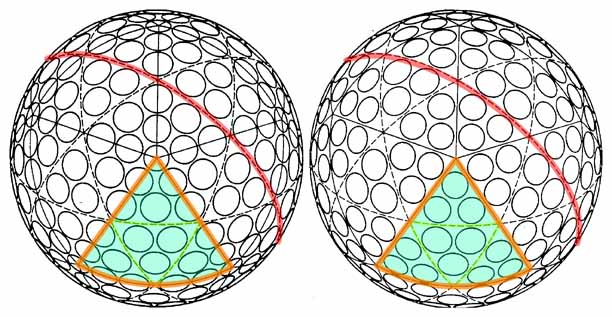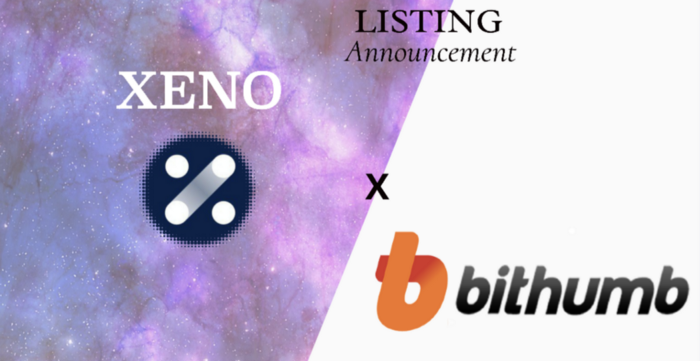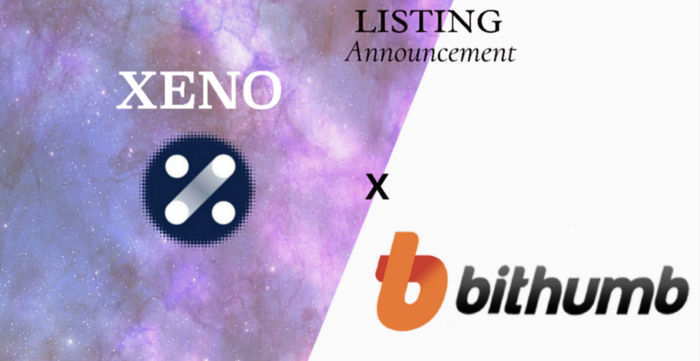Blogs
Are Stellar (XLM) and Ripple (XRP) really that comparable?

We can see how the cryptocurrency market grows every day. Steadily the offer of virtual coins is turning into a larger one, diversifying like that the wideness of the industry and each time, providing more new services that attach to the needs of the sector. However, sometimes in this amplitude of the repertory, many similarities can be found betwixt cryptocurrencies; even getting to a point where it results challenging to differentiate one from the other.
That is exactly the case of Stellar (XLM) and Ripple (XRP), two separate tokens that are linked one to the other very often. As a matter of fact, there are significant similarities between Stellar (XLM) and Ripple (XRP), many of which the most popular include the fact of having been founded by the same person Jed McCaleb.
But the truth is that despite the common points, these coins behave very differently, and their goals are the same way, very apart. Let’s see what the main differences between the tokens of Stellar and Ripple are!
The overall dissimilarity
The first difference has to be the purpose of each one of the cryptos. While it was supposed that Stellar was created with the intention of fixing the errors and improving what Ripple has, they actually approach different objectives.
For instance, Stellar aims to work with individuals to provide them with financial product and services at a meager price, creating an opportunity to fight against poverty and develop the full financial potential of each person.
On the other hand, Ripple works on a network with the vision of connecting bank entities, exchange platforms, and payment providers through the RippleNet. Its primary mission is to provide a safe network where transactions would be completely effective.
Similarly, while Stellar is a not-for-profit organization, Ripple is the opposite, a profit-seeking company envisioning to work on solutions to the most significant financial enterprises in the industry.
The protocols
At the beginning both Stellar and Ripple used to work under the same protocol, even sharing almost the same code. However, the story is entirely different now as currently they use different protocols and share almost nothing of the code.
At the moment, Stellar uses the Stellar Consensus Protocol (SCP) which can be considered as a big-scale evolution of the Federated Byzantine Agreement (FBA); in essence, it offers complete decentralization, flexible trust, bounded security and low latency. It all remains on decentralization, a fact that Ripple does not offer at the moment.
Ripple, on the other hand, uses the Ripple Protocol Consensus Algorithm (RPCA), which is basically based on the mechanism of Proof of Correctness (PoC).
Likewise, when it comes to the speeds of each protocol the first works at a pace of 1000 tx/s in contrast to the protocol used by Ripple, which in the lapse of each second is applied to all of the nodes.
Strategic alliances and collaborations
In this matter, Stellar is a few steps behind Ripple, which has developed the best partnership relations across the world.
Nevertheless, the Stellar Development Foundation has also created solid partnerships setting up payment platforms in some countries of the Europe continent and the Philippines, having Africa as the next target, a market potentially powerful to work with as is highly unexplored and accomplishes the vision of the company.
Ripple has developed relations all across the globe with some of the most crucial bank entities, including central banks. There remains a crucial difference between the two companies; while one is focusing on building relations with non-bank institutions, the other targets only the banking industry.
The current market differentiation
It seems somehow that even when Stellar has developed a great business model it still has so much to do to reach the level of its contender Ripple. As of today, Ripple figures at the number 3 spot in the charts of the website Coinmarketcap.com while Stellar is at the 8th position.
Both virtual currencies have decreased in value in the last 24 hours, Ripple at a 7.9% with a current price of $0.68 per unit, and Stellar with 9.5% of decrease and a total price per unit of $0.33.
To sum up, it results evident that now there are more features making both coins differ from the other than what it made them comparable at the beginning. However, both are excellent options in the market, and without any doubt, we could be seeing them exponentially growing in the near future.
For the latest cryptocurrency news, join our Telegram!
Disclaimer: This article should not be taken as, and is not intended to provide, investment advice. Global Coin Report and/or its affiliates, employees, writers, and subcontractors are cryptocurrency investors and from time to time may or may not have holdings in some of the coins or tokens they cover. Please conduct your own thorough research before investing in any cryptocurrency and read our full disclaimer.
Chart courtesy of Wikipedia Commons
Altcoins
XNO Token of Xeno NFT Hub listed on Bithumb Korea Exchange


Hong Kong, Hong Kong, 25th January, 2021, // ChainWire //
Xeno Holdings Limited (xno.live ), a blockchain solutions company based in Hong Kong, has announced the listing of its ecosystem utility token XNO on the ‘Bithumb Korea’ cryptocurrency exchange on January 21st 2021.
Xeno NFT Hub (market.xno.live ), developed by Xeno Holdings, enables easy minting of digital items into NFTs while also providing a marketplace where anyone can securely trade NFTs.
The Xeno NFT Hub project team includes former members of the technology project Yosemite X based in San Francisco and professionals such as Gabby Dizon who is a games industry expert and NFT space influencer based in Southeast Asia.
NFT(Non-Fungible Token) technology has recently gained huge focus in the blockchain arena and beyond, making waves in the online gaming sector, the art world, and the digital copyrights industry in recent years. The strongest feature of NFTs is that “NFTs are unique digital assets that cannot be replaced or forged”. Unlike fungible tokens such as Bitcoin or Ether, NFTs are not interchangeable for other tokens of the same type but instead each NFT has a unique value and specific information that cannot be replaced. This fact makes NFTs the perfect solution to record and prove ownership of digital and real-world items like works of art, game items, limited-edition collectibles, and more. One of the ways to have a successful…
Altcoins
Should Crypto Projects Devote Resources to Community Growth and Marketing?

2020 has been an incredible year for crypto as investors have generated windfall profits and crypto projects have seen their businesses gain the spotlight they’ve been looking for. While Bitcoin has received most of the attention after major institutional investors announced they were accumulating the increasingly scarce asset, many altcoins have also seen their fair share of glory. When looking at all the big winners of the past year, the first project that probably comes to mind is Chainlink, having appreciated by more than 550% YTD and now valued at over $4.5 billion. But, the actual biggest winner of the year is HEX with a YTD return of over 5,000%.
I mention both of the above projects as they have each taken slightly different paths to achieve greatness. Chainlink has devoted resources toward building a fundamentally sound business with many strategic partnerships while HEX has spent vast sums of money on marketing and promotion. Both approaches are valid, but one thing is certain, it is absolutely imperative for crypto projects to let the crypto community know what makes them special. Of course, one of the reasons that makes crypto so valuable is the powerful blockchain technology that most projects are utilizing.
Cryptocurrency vs. Blockchain Technology
It’s important to make a distinction between blockchain technology and cryptocurrency. Although they are often used interchangeably, they are different. Blockchain technology and crypto were both created after the 2008 financial crisis, but cryptocurrency…
Altcoins
XENO starts VIP NFT trading service and collaborates with contemporary artist Hiro Yamagata


Hong Kong, Hong Kong, 24th December, 2020, // ChainWire //
The XENO NFT Hub (https://xno.live) will provide a crypto-powered digital items and collectables trading platform allowing users to create, buy, and sell NFTs. Additionally it will support auction based listings, governance and voting mechanisms, trade history tracking, user rating and other advanced features.
As a first step towards its fully comprehensive service, XENO NFT Hub launched a recent VIP service to select users and early adopters in December 2020 with plans for a full Public Beta to open in June 2021.
“NFTs are extremely flexible in their usage, from digital event tickets to artwork, and while NFTs have a very wide spectrum of uses and categories XENO will initially focus its partnership efforts and its own item curation on three primary areas: gaming, sports & entertainment, and collectibles.”, said XENO NFT Hub president Anthony Di Franco.
He also added “This does not mean we will prohibit other types of NFTs from our ecosystem However, it simply means that XENO’s efforts as a company will be targeted into these verticals initially as a cohesive business approach.”
Development and Procurement Lead, Gabby Dizon explained, “Despite our initial focus, we found ourselves with a unique opportunity to host some of the works of Mr. Hiro Yamagata. We are collaborating with Japanese artist Hiro Yamagata to enshrine some of his artwork into NFTs.”
Mr. Yamagata has…
-

 Blogs6 years ago
Blogs6 years agoBitcoin Cash (BCH) and Ripple (XRP) Headed to Expansion with Revolut
-

 Blogs6 years ago
Blogs6 years agoAnother Bank Joins Ripple! The first ever bank in Oman to be a part of RippleNet
-

 Blogs6 years ago
Blogs6 years agoStandard Chartered Plans on Extending the Use of Ripple (XRP) Network
-

 Blogs6 years ago
Blogs6 years agoElectroneum (ETN) New Mining App Set For Mass Adoption
-

 Don't Miss6 years ago
Don't Miss6 years agoRipple’s five new partnerships are mouthwatering
-

 Blogs6 years ago
Blogs6 years agoCryptocurrency is paving new avenues for content creators to explore
-

 Blogs6 years ago
Blogs6 years agoEthereum Classic (ETC) Is Aiming To Align With Ethereum (ETH)
-

 Blogs6 years ago
Blogs6 years agoLitecoin (LTC) Becomes Compatible with Blocknet while Getting Listed on Gemini Exchange















